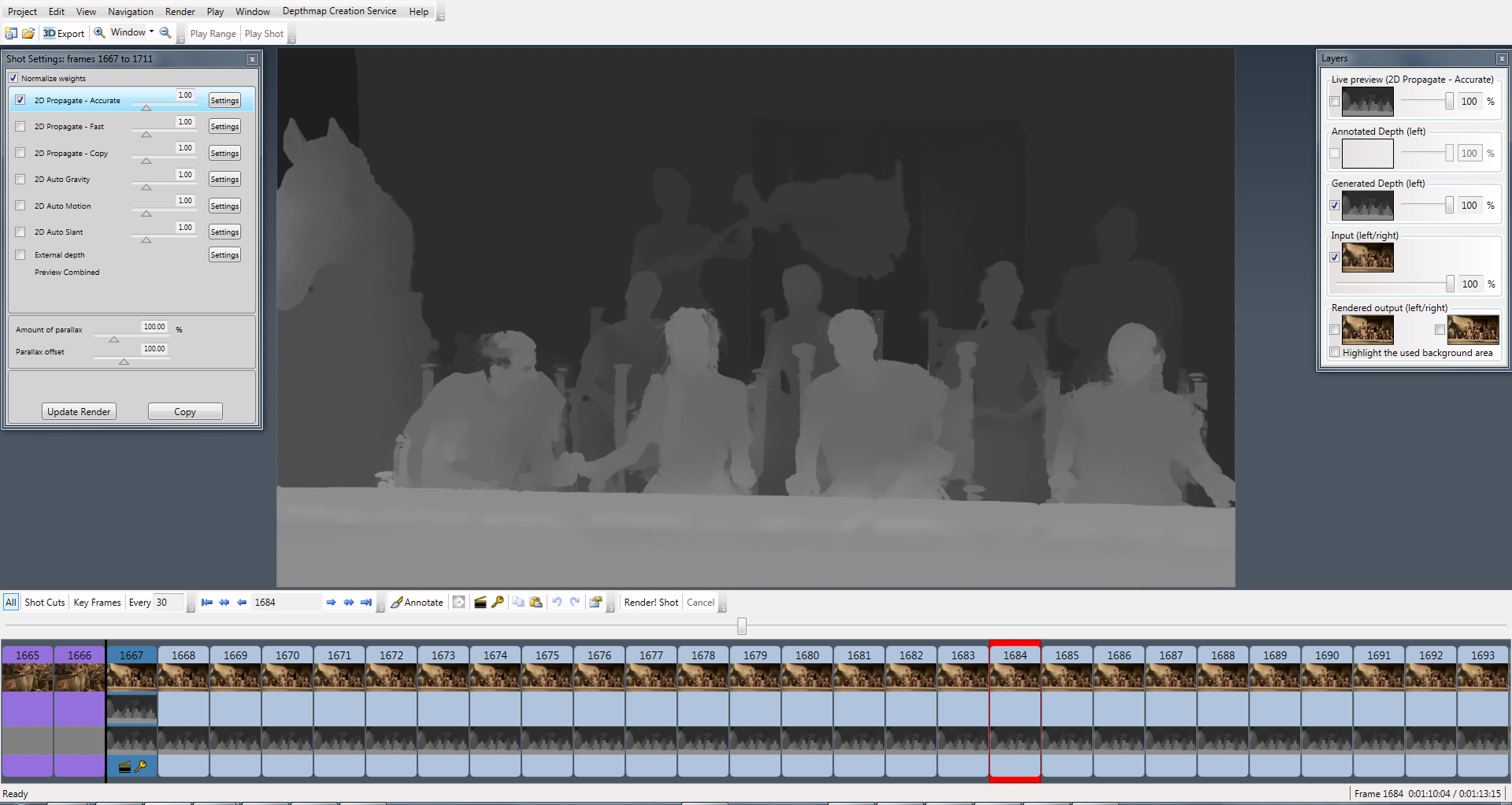
Two approaches to stereo conversion can be loosely defined: quality semiautomatic conversion for cinema and high quality 3DTV, and low-quality automatic conversion for cheap 3DTV, VOD and similar applications.

If done properly and thoroughly, the conversion produces stereo video of similar quality to "native" stereo video which is shot in stereo and accurately adjusted and aligned in post-production. However, in order to be successful, the conversion should be done with sufficient accuracy and correctness: the quality of the original 2D images should not deteriorate, and the introduced disparity cue should not contradict other cues used by the brain for depth perception.

1.1 Re-rendering of computer animated filmsĢD-to-3D conversion adds the binocular disparity depth cue to digital images perceived by the brain, thus, if done properly, greatly improving the immersive effect while viewing stereo video in comparison to 2D video.


 0 kommentar(er)
0 kommentar(er)
